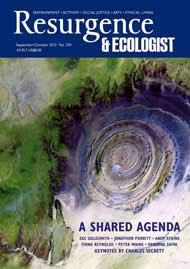The world is full of self-help books and rather empty of books on how to help each other.
Richard Sennett, one of the most reflective of modern sociologists, has tried to fill some of this gap by looking at what he calls “the craft of cooperation” – listening, being responsive, being able to act together. His new book Together: The Rituals, Pleasures and Politics of Cooperation is a tour de force.
Sennett, like a Dutch master, paints not just an overall picture that you have to stand back to see, but also the angle of the light on every object and the detail in the corner that draws you forward. The big picture is the pattern of instincts that explain why and the ingenuity that shapes how we cooperate. Cooperation, he sets out at the start, is an exchange in which the participants benefit from the encounter. To be cooperative is a natural enough default, but, as he concludes in his last sentence of all, “as social animals, we are capable of cooperating more deeply than the existing social order envisions.” The detail in the picture flows effortlessly, with points of analysis on the nature and craft of cooperation, across time and culture.
Sennett looks at the 19th century and how in the labour movement the call for collective bargaining, seeking strength in numbers, “was intended to establish a common thread between people who did very different kinds of industrial and craft labour”. When Jane Addams, the pioneer of urban community centres, opened a settlement in the Near West Side of Chicago, she designed it to create space for informal activity and exchange – a space to be convivial.
Social rituals help to make a habit of cooperation and help to frame how we then behave. Sennett reminds us that when we shake hands, “none of us recall that this greeting was invented by the Greeks to show that the hands hold no weapons.”
Like Karl Polanyi, and others since, he argues that, while economic life in more modern times still draws deeply from the wells of social cooperation, it puts less back. Social relations, at work and elsewhere, became embittered. An example is inequality: designed, we are told, to incentivise economic success, but something that also corrodes it. And he cites – very nicely for me – my work with Agnes Nairn, as part of a section looking at how inequality undermines cooperation among children and young people.
In a work setting, having touched on the ideals of cooperative enterprise, Sennett analyses the mismatch between the language of teamwork in modern businesses and the reality. He quotes Gideon Kunda, who argues that the most commonly adopted approach by modern managers to encouraging teamwork creates a form of “deep acting”, meaning that “underneath the surface of working cooperatively, team-members are showing off personally, usually to a manager or superior who is judging team performance.” This, says Kunda, is the “feigned solidarity” of the modern workplace.
The way to renew true cooperation is through shared action: repairing ways in which we can engage with others; restoring space in which we can be more responsive to those around; encouraging forms of commitment; and finding new ways to tap into the deep desire we all have for belonging and for some form of community around us.
Sennett is a master, in awe of the world around him and brilliantly aware of how we can be so much more, if we can be ourselves.







